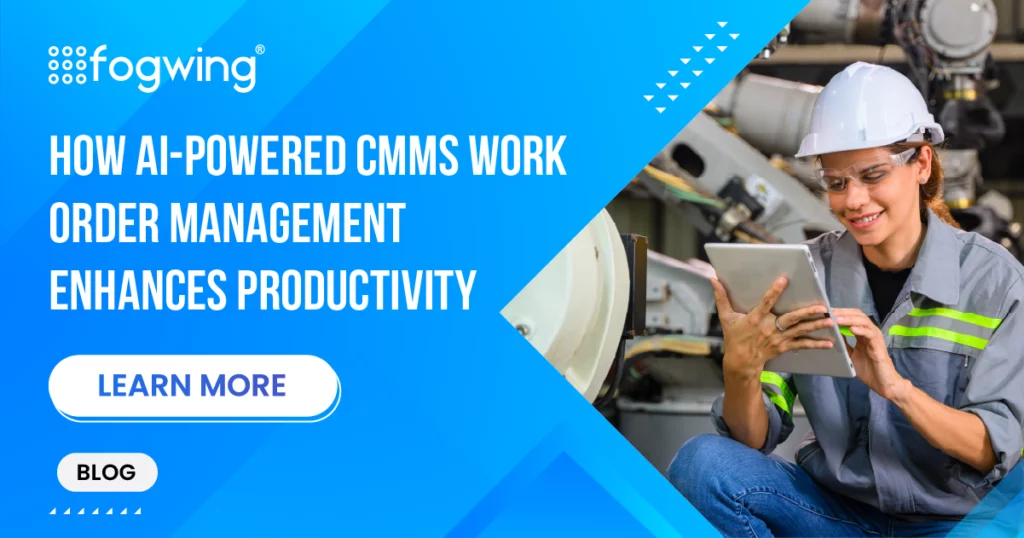In today’s industrial environment, the efficiency of equipment maintenance plays a crucial role in overall productivity. This is especially true in industries where asset uptime is critical, such as manufacturing, energy, transportation, and utilities.
Organizations increasingly turn to computerized maintenance management systems (CMMS) to help achieve operational efficiency. CMMS is designed to streamline the maintenance process, reduce downtime, and improve asset performance through automation and data-driven insights.
However, to ensure success, more than simply enforcing a CMMS system is needed. Engineers and asset operators need proper training to harness the system’s full potential and effectively use it in their daily lives.
This blog will explore why CMMS training is essential for engineers and asset operators, the key areas to focus on during training, and the benefits of well-trained teams.
Why is CMMS Training Crucial?

According CMRP, CMMS training is important for asset intensive manufacturing organization to enhance the skill of maintenance operators to lead the organization to productive and innovate in the competitive environment.
As organizations embrace digital transformation, CMMS software is becoming a backbone for maintenance management. It serves as a tool to centralize maintenance operations, track asset health, optimize workflows, and increase operational efficiency.
However, a tool is only as effective as those who use it. Engineers and asset operators are at the core of maintenance activities, so providing them with comprehensive training is crucial. Without it, even the most advanced CMMS software may fail to deliver the desired outcomes.
Maximizing CMMS Efficiency:
Engineers and asset operators trained in CMMS software can leverage its full functionality to streamline processes. For example, engineers can more efficiently set up preventive maintenance schedules, manage work orders, and track asset history.
Operators, who often interact with equipment and machinery, can use the system to report issues, request repairs, and monitor asset performance.
With asks may become burdensome and unmanageable, leading to inefficiencies, errors, and even system misuse.
Proper training ensures that engineers and operators use the software correctly, resulting in better workflows, reduced errors, and more time spent on critical tasks.
Enhancing Asset Management and Performance:
The ultimate goal of CMMS is to improve asset performance and extend the lifespan of machinery. For engineers, this means understanding how to use CMMS to track maintenance tasks, interpret performance data, and conduct thorough inspections. For operators, it means detecting issues early and reporting them via the system before they become major problems.
Trained users can maximize the value of assets by leveraging CMMS features like predictive maintenance and real-time monitoring. This leads to fewer breakdowns, longer equipment life, and optimized resource allocation.
Boosting Responsiveness and Reducing Downtime:
Maintenance delays can significantly impact production schedules. Engineers and asset operators who understand how to use CMMS effectively can respond to maintenance requests quickly and resolve issues promptly.
This reduces downtime and prevents disruptions to the production line.
Withers may only prioritize urgent work with the right training, or operators may be able to communicate issues to the right people. CMMS training ensures that maintenance teams can respond faster and more accurately, reducing downtime and improving production efficiency.
Ensuring Compliance and Documentation:
CMMS software ensures that maintenance activities meet industry regulations and standards. Whether it’s tracking safety inspections, calibration records, or maintenance history, CMMS helps organizations stay compliant with regulatory requirements.
Engineers and operators trained in CMMS can accurately document their work, generate reports demonstrating compliance, and improve audit readiness. Conversely, with training, organizations may be able to maintain proper documentation, which can lead to compliance violations, fines, and operational inefficiencies.
Fostering a Proactive Maintenance Culture:
Proactive maintenance is key to preventing unexpected breakdowns and costly repairs. Engineers and asset operators well-trained in CMMS can more effectively set up and manage preventive maintenance (PM) schedules, identify potential issues, and track maintenance tasks.
Training encourages a shift from reactive to proactive maintenance, enabling teams to anticipate and resolve problems before they escalate.

Key Areas to Focus on During CMMS Training
CMMS software is feature-rich, and engineers and asset operators must be familiar with various functionalities. The following key areas should be included in any CMMS training program to ensure that users are well-equipped to perform their roles effectively:
- One of the first steps in CMMS training is ensuring that engineers and asset operators are comfortable navigating the system. They should become familiar with the user interface and understand how to access various modules, such as asset management, work orders, inventory, and maintenance schedules.
- In addition, trainees should learn how to customize their dashboards and set up personal preferences to make the system more intuitive and aligned with their daily tasks. System navigation is a crucial part of CMMS training, as it helps users move seamlessly through the system and reduces time spent on manual tasks.
- Work order management is a central component of CMMS. Engineers and operators must learn how to create, assign, track, and complete work orders. Training should cover how to categorize work orders (e.g., preventive, corrective, or emergency), assign them to the right personnel, and monitor their progress.
- Engineers should also be trained to close out work orders and ensure that all necessary information is recorded, including labor hours, materials used, and any repairs made. Operators need to know how to submit work requests, follow up on their status, and provide feedback on completed tasks.
- Preventive maintenance is essential for reducing downtime and ensuring that assets operate efficiently. Engineers need to know how to create and manage PM schedules within CMMS, including setting task intervals, assigning resources, and tracking task completion.
- For operators, training should emphasize the importance of following the PM schedule and documenting any anomalies or issues during inspections. Understanding how to set up, manage, and adhere to PM schedules is essential for proactive maintenance and ensuring the long-term health of assets.
- Predictive maintenance leverages real-time data from IoT sensors, equipment monitoring tools, and advanced analytics to predict when an asset will likely fail. Engineers should be trained to use CMMS to integrate predictive maintenance data and utilize algorithms to identify potential failures before they occur.
- Operators, conversely, need to understand how to interact with predictive data in CMMS. They should be able to interpret the results, flag concerns, and escalate issues to engineers when needed.
- A CMMS is also an effective tool for managing spare parts and materials. Training should cover how to track inventory levels, order new parts, and ensure that spare parts are available when needed for repairs. Engineers and operators should learn to monitor inventory through CMMS to avoid shortages and excess stock, which can tie up valuable resources.
- CMMS software generates vast amounts of data that can be used for reporting and decision-making. Engineers should be trained to generate maintenance reports, analyze trends in equipment performance, and track maintenance costs. This data is essential for continuous improvement and informed decision-making.
- Operators should be trained to input accurate data into the system, as this will ensure that the reports are reliable. Regularly reviewing performance data allows teams to optimize their processes, reduce costs, and improve the equipment’s overall reliability.
The Benefits of Ongoing CMMS Training
CMMS systems are constantly evolving with new features, updates, and integrations. Ongoing training is necessary to ensure that engineers and asset operators continue to get the most value out of the system. Regular refresher courses, hands-on workshops, and system updates will help maintain proficiency and improve overall system adoption.
Ongoing training also fosters a culture of continuous improvement. By encouraging feedback and actively engaging maintenance teams, organizations can identify areas for improvement, optimize workflows, and stay ahead of potential issues before they arise.
Fogwing CMMS Training and Certification:
Fogwing’s CMMS training sessions are structured to empower users with comprehensive knowledge of the platform’s features, enabling seamless integration and efficient usage in industrial maintenance operations.
These training programs are tailored to different levels of expertise and focus on core functionalities such as work order creation, preventive maintenance scheduling, inventory management, and asset performance monitoring.
Participants gain hands-on experience through interactive sessions and guided tutorials, helping them unlock the full potential of Fogwing CMMS Software. Key topics include:
- Digitalizing maintenance workflows.
- Leveraging IoT for real-time asset monitoring.
- Utilizing AI-powered insights for predictive maintenance.
This ensures that users can effectively manage asset health, reduce downtime, and streamline operational efficiency.The training calendar is updated regularly to accommodate various user schedules, offering flexibility and accessibility. It is a valuable resource for maintenance teams, ensuring they are well-equipped to maximize the platform’s capabilities.
For detailed schedules and registration, visit Fogwing’s Training Calendar
Conclusion
CMMS is a powerful tool for improving asset management, reducing downtime, and enhancing overall maintenance efficiency. However, its effectiveness depends on the competency of the people who use it. Proper training for engineers and asset operators is critical to unlocking the full potential of CMMS software and ensuring that maintenance operations are carried out efficiently and effectively.
By investing in comprehensive CMMS training, organizations can foster a more proactive, data-driven maintenance culture, leading to increased asset uptime, reduced costs, and improved productivity. As industries continue to digitize, CMMS training for engineers and asset operators will remain an essential investment for achieving long-term operational success.





